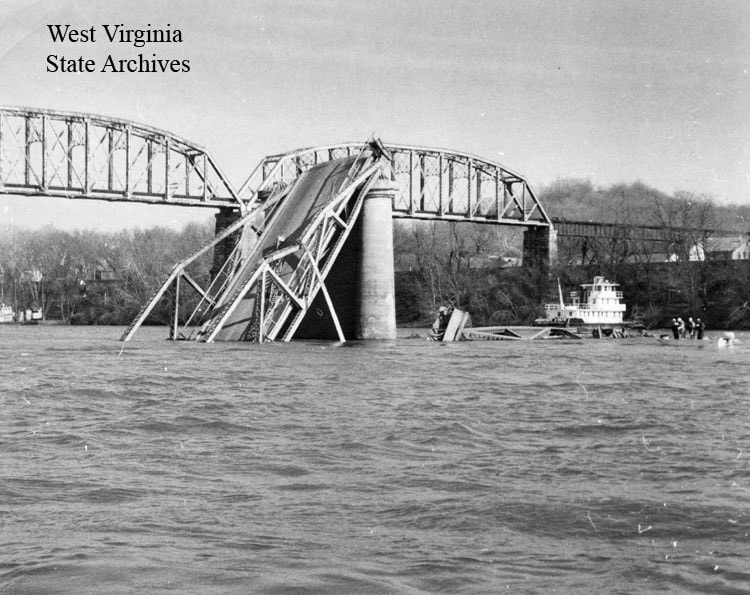In the wake of the Silver Bridge collapse, West Virginia authorities closed the St. Mary’s Bridge, 100 miles upstream from Point Pleasant, which was built to the same design and specifications as the Silver Bridge (it was demolished three years later). President Lyndon Johnson pledged the full support of all federal agencies that could provide investigatory oversight as well as recovery and eventual construction of a new bridge for the vital river crossing. In addition to the loss of life from the disaster, the Point Pleasant region and neighboring communities in Ohio suffered severe economic impacts, both from the loss of the crossing which was used by an average of 3,500 to 4,000 vehicles each day, and from the wreckage hindering important shipping channels in the river. The economic impact on the region was estimated to be resulting in a loss of $1 million each month, prompting President Johnson to hasten the provision of funding to build the replacement bridge. In the House of Representatives, West Virginia Congressman Ken Hechler and Ohio Congressman Clarence Miller joined their efforts to secure much needed emergency assistance. As a result of these efforts, a new bridge across the Ohio River at Point Pleasant was completed and opened exactly two years after the disaster. The new bridge was named the "Silver Memorial Bridge" and continues to serve Point Pleasant today.
Apart from the local recovery effort, the collapse of the Silver Bridge prompted a national response as well. Four days after the disaster, Senator Jennings Randolph, Chairman of the Senate Committee of Public Works, initiated hearings which resulted in the inclusion of the first federal bridge inspection program in the Federal-Aid Highway bill. Signed into law by President Johnson on August 24, 1968, the legislation required the Department of Transportation to carry out safety inspections for all federally-funded bridges every two-years. A National Bridge Inventory was also created to provide a central database where all inspection information and safety ratings could be stored and reviewed. In the fifty years since December 15, 1967, the Silver Bridge disaster has loomed large in the memory and history of West Virginia and the United States. In Point Pleasant, the story of the disaster lives on in the local river historical museum and in a memorial at the former bridge site. The disaster also fueled folklore surrounding the “Mothman,” a creature alleged to have been seen in the vicinity of bridge in the year leading up to its collapse, a story which has subsequently been featured in literature and film. The national inspection program inspired by the Silver Bridge accident led to an increase in identifying structurally-deficient bridges and the allocation of resources to upgrade or replace them. However, subsequent disasters such as the 1983 Mianus River Bridge collapse in Connecticut and the 2007 I-35W Mississippi River Bridge failure in Minnesota have led to continued questions over the effectiveness of bridge safety monitoring and increased calls for a large-scale program for replacing aging infrastructure. Sources: “Hechler and Miller Move for U.S. Aid.” The Herald-Dispatch: Huntington (December 16, 1967). Wallace, Terry. “25 Years Later, Bridge Collapse Still Haunts West Virginia Town.” West Virginia Archives and History (1992). https://goo.gl/7DyQPq West Virginia Department of Transportation. “Silver Bridge.” (2017) https://goo.gl/7trsqZ Comments are closed.
|
Welcome to the Byrd Center Blog! We share content here including research from our archival collections, articles from our director, and information on upcoming events.
Categories
All
Archives
July 2023
|
Our Mission: |
The Byrd Center advances representative democracy by promoting a better understanding of the United States Congress and the Constitution through programs and research that engage citizens.
|
Copyright © Robert C. Byrd Center for Congressional History and Education
|



 RSS Feed
RSS Feed
